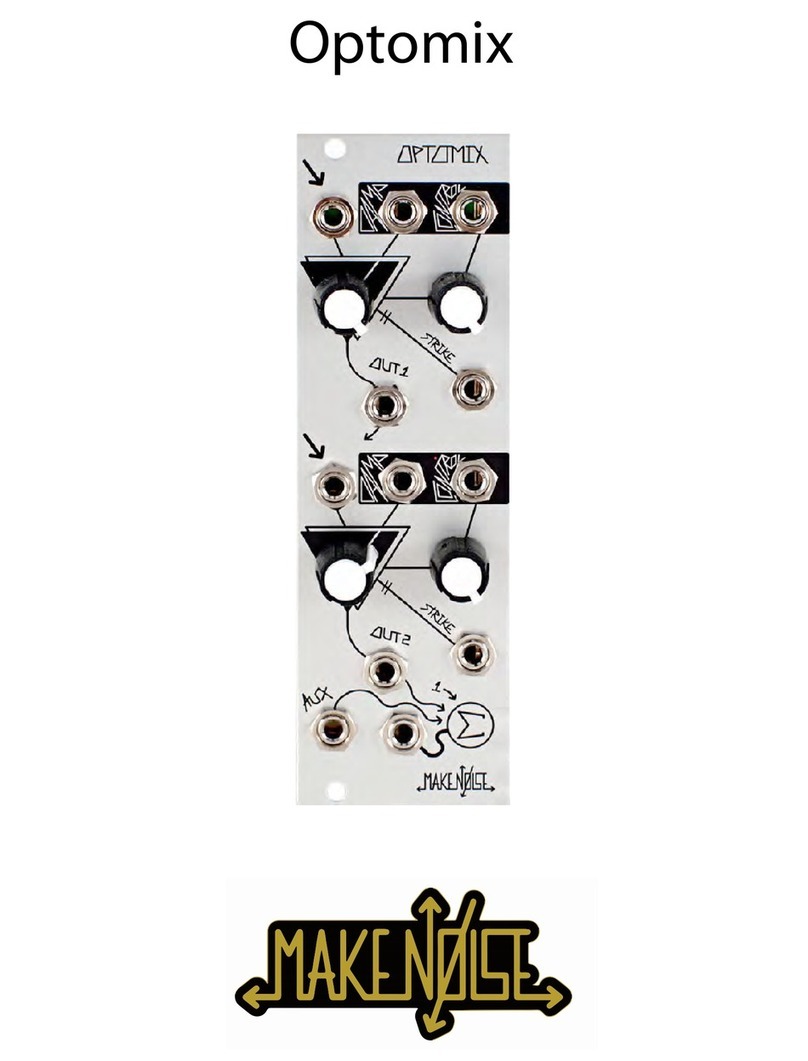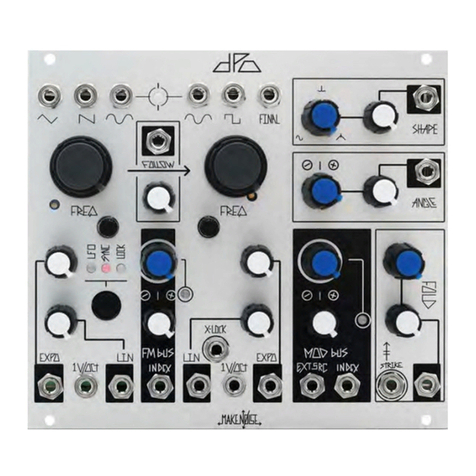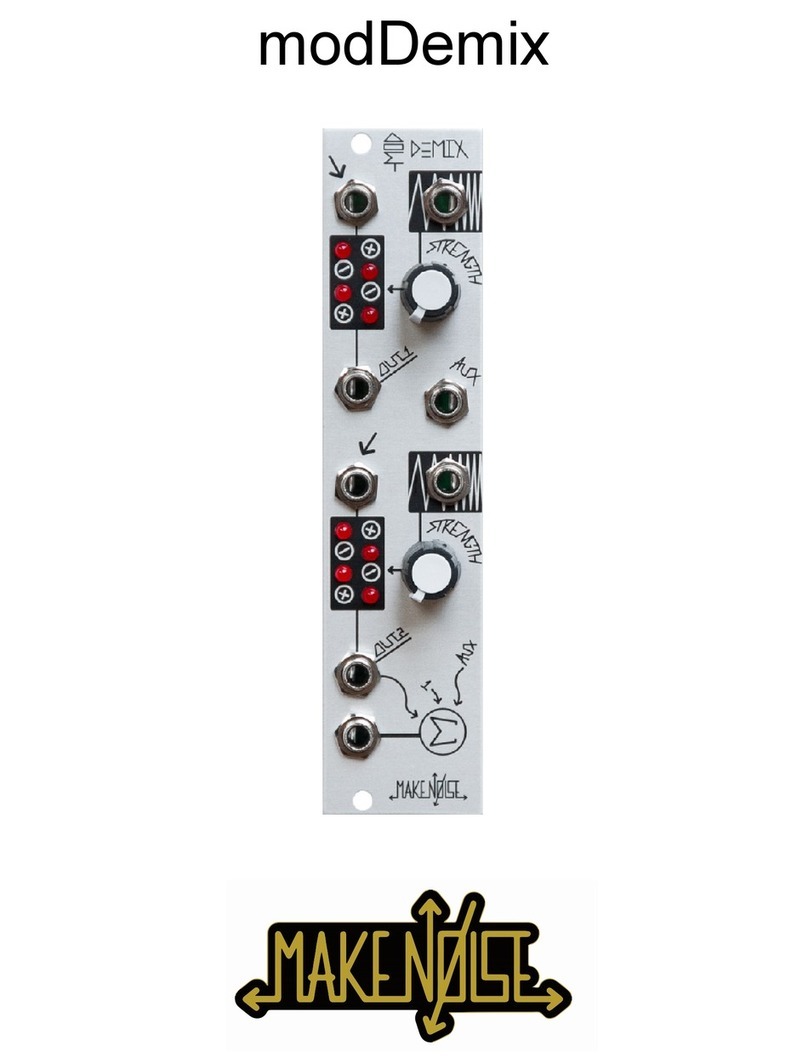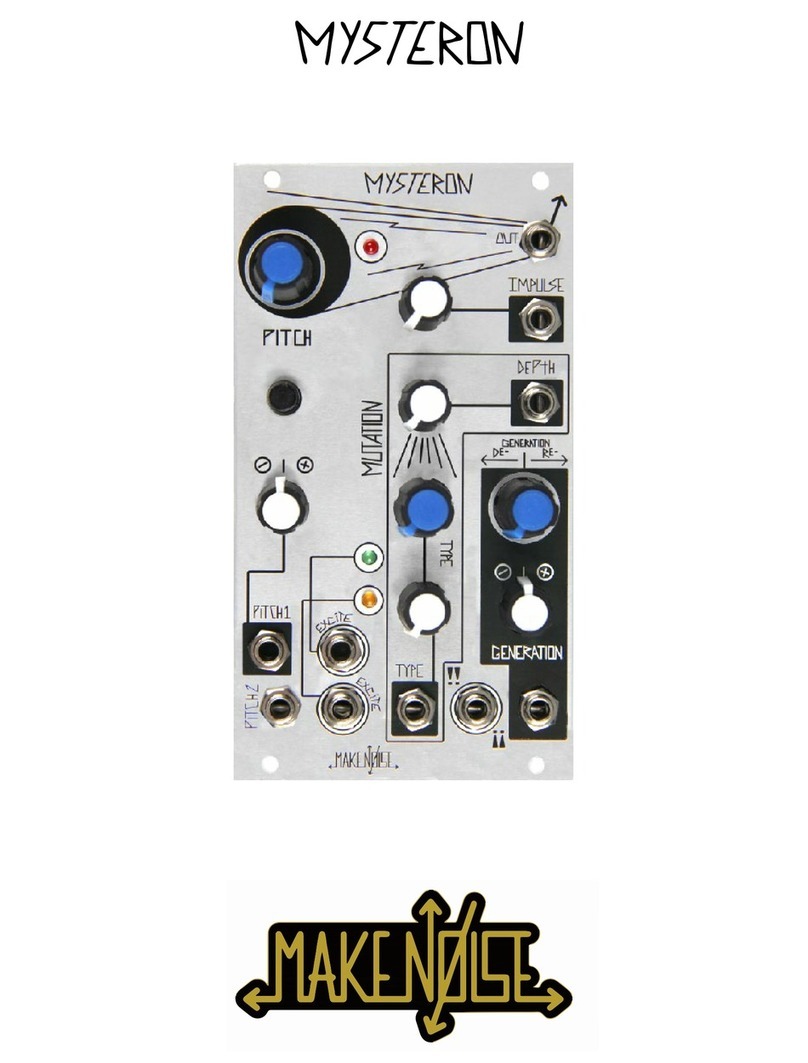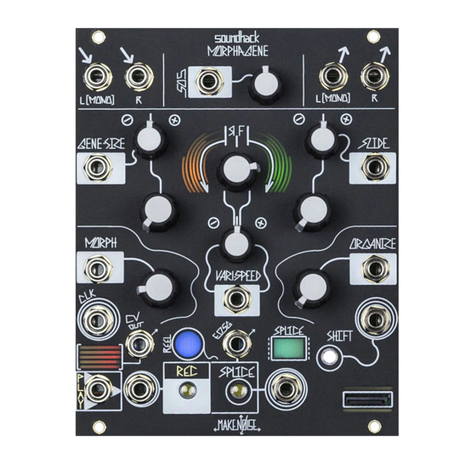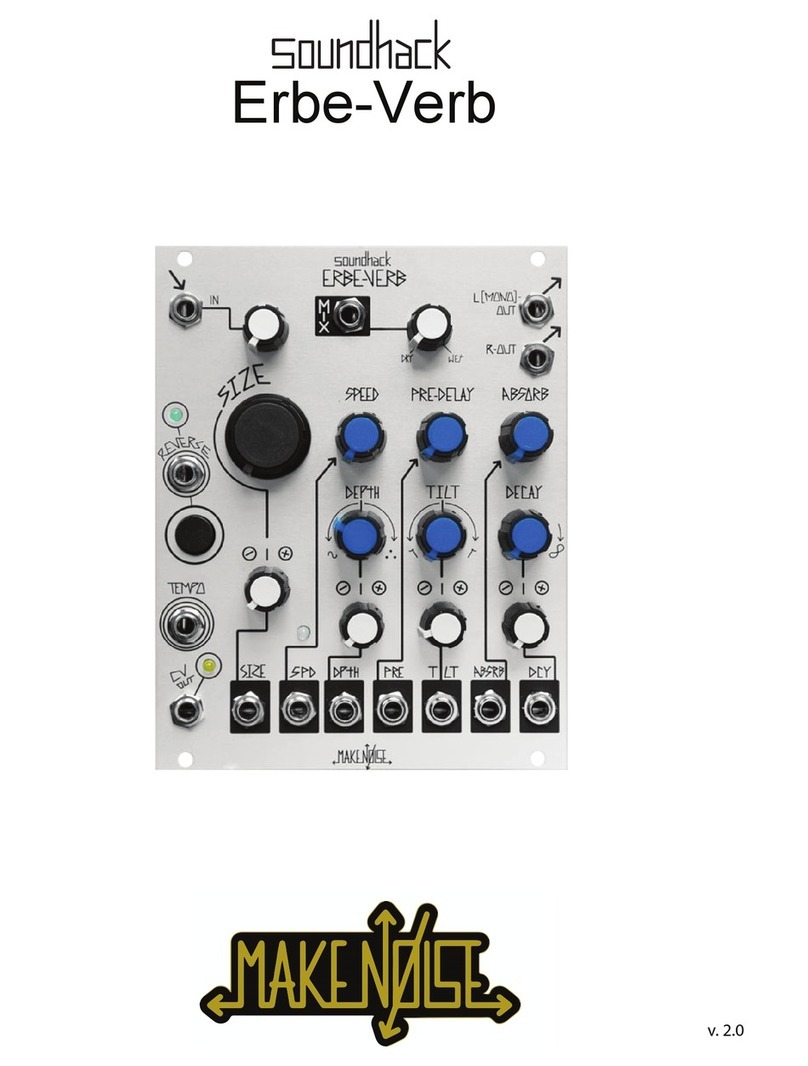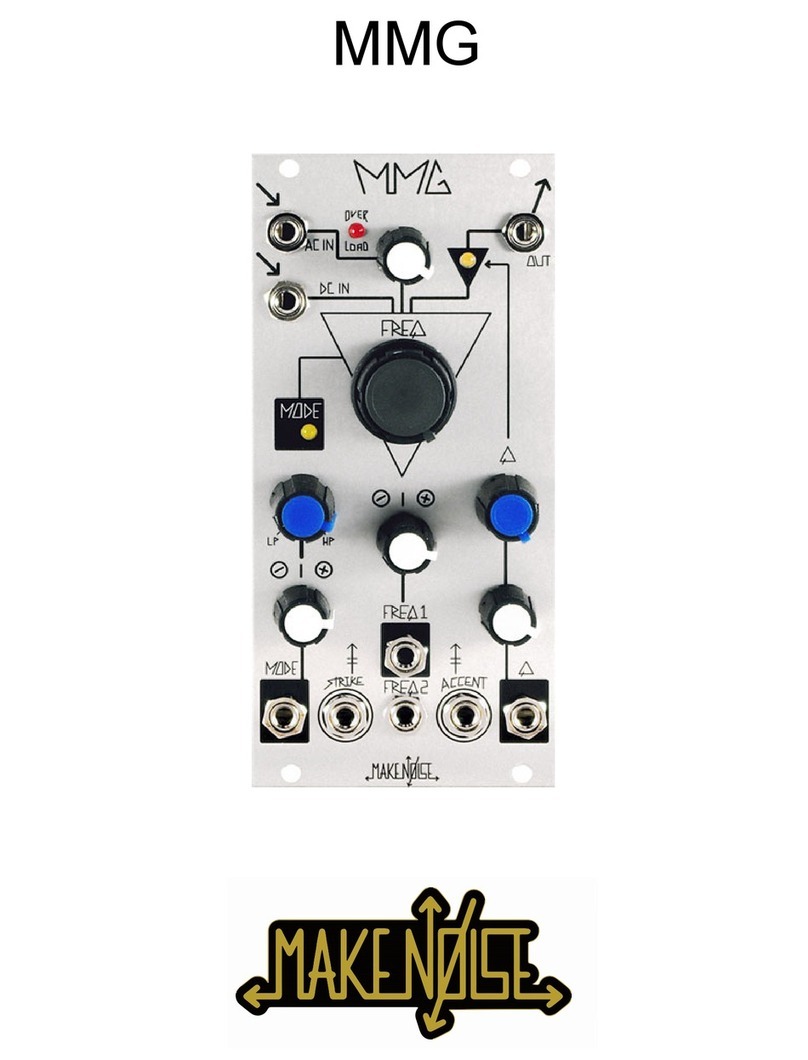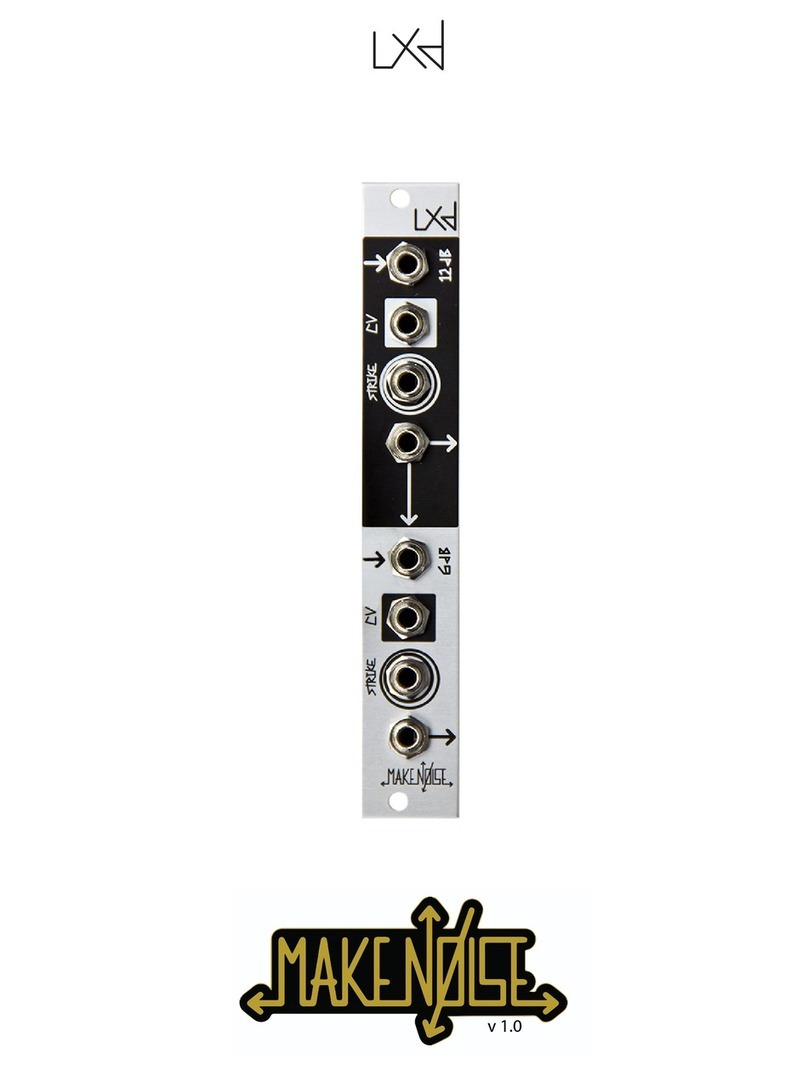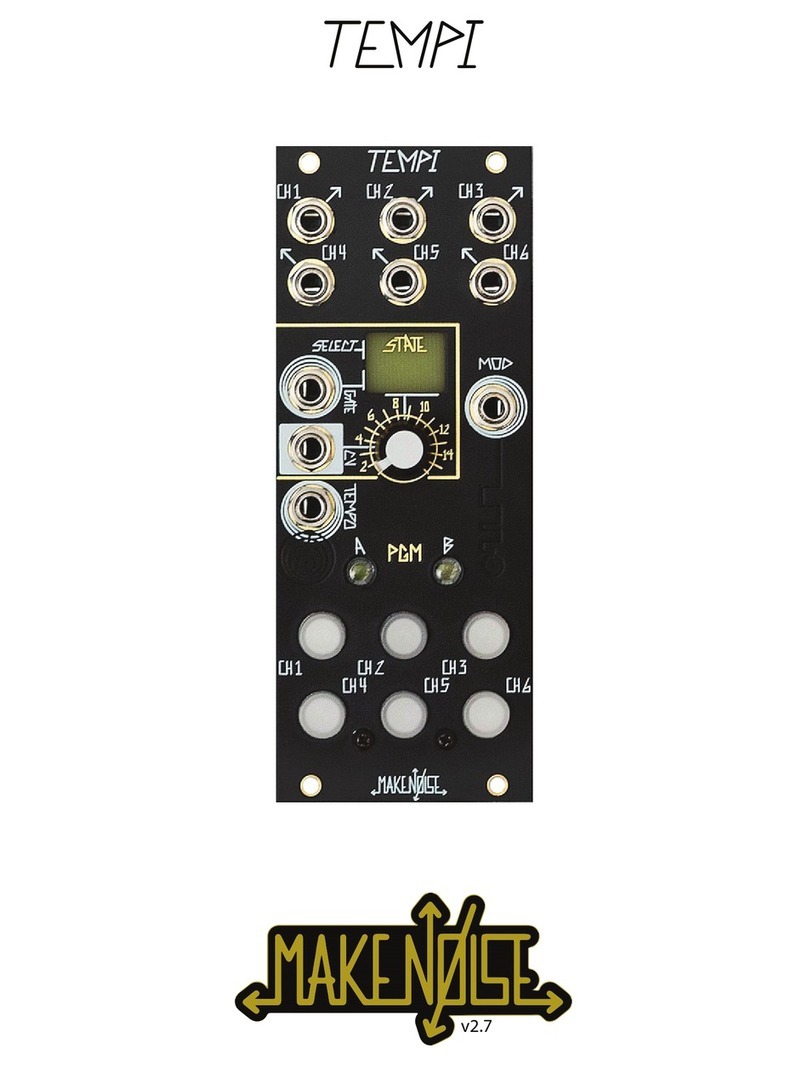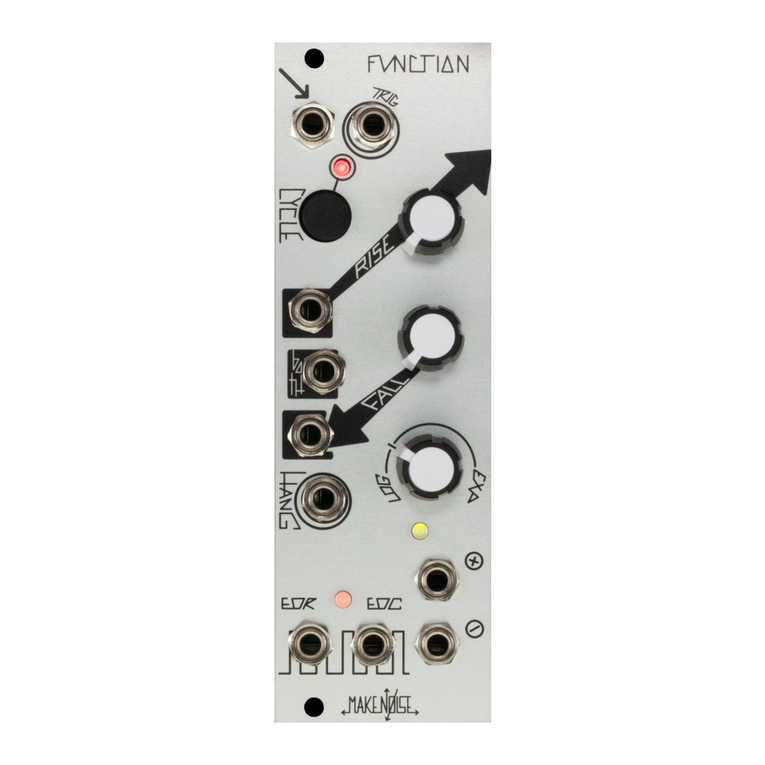
When you rst power up a new TEMPI, BANK A will be lled with sixteen States representing a selection of classic
and new Clock Divider/Multiplier settings. All these settings are user-editable and can be overwritten at will.
Here's a short description:
STATES 2-7 are Clock Divider States:
2. Powers of 2: ÷1, ÷2, ÷4, ÷8, ÷16, ÷32
3. Primes: ÷2, ÷3, ÷5, ÷7, ÷11, ÷13
4. Integers: ÷1, ÷2, ÷3, ÷4, ÷5, ÷6
5. Evens: ÷2, ÷4, ÷6, ÷8, ÷10, ÷12
6. Odds: ÷3, ÷5, ÷7, ÷9, ÷11, ÷13
7. Fibonacci: ÷2, ÷3, ÷5, ÷8, ÷13, ÷21
STATES 8-13 are Clock Multiplier States:
8. Powers of 2: *1, *2, *4, *8, *16, *32
9. Primes: *2, *3, *5, *7, *11, *13
10. Integers: *1, *2, *3, *4, *5, *6
11. Evens: *2, *4, *6, *8, *10, *12
12. Odds: *3, *5, *7, *9, *11, *13
13. Fibonacci: *2, *3, *5, *8, *13, *21
14. Multiples and *2, *3, *4, ÷2, ÷3, ÷4
Divisions:
15. PHASE Demonstration: All six CHannels are set to the same TEMPO, but with six unique Phase values.
16. Non-Integer Division Demonstration: Each successive channel is one Fine decrement slower than the previous, resulting in adjacent
CHannels going slowly in and out of Phase with each other.
The Factory Settings of the {ProGraM Edit} Page are as follows:
- HUMAN Resolution 50%
- SHIFT = CW
- RUN/STOP = OFF
- SHIFT = Jumbled
To restore all Factory Settings, power o the system. [HOLD] PGM_B and BUTTON-4 simultaneously while powering back on.
STATE 1 All six CHannels are“÷1.” This setting is also the "Init" for all STATES in the other three BANKS.
